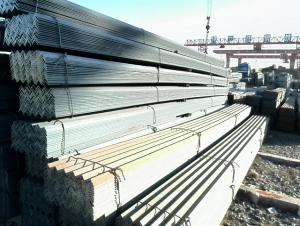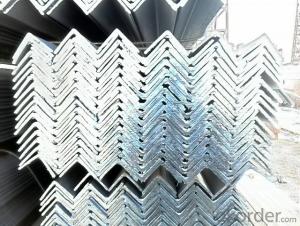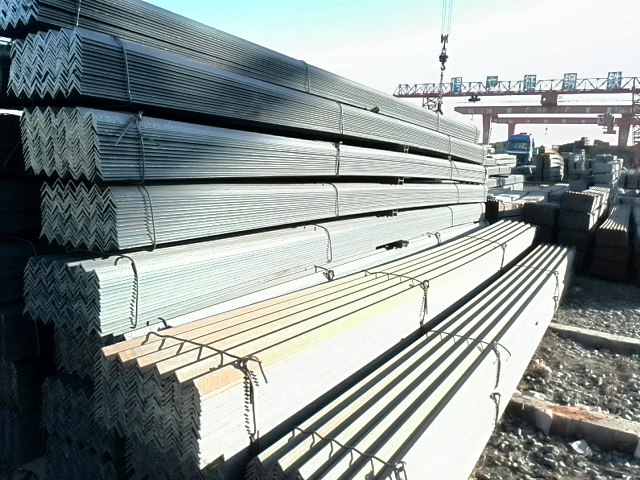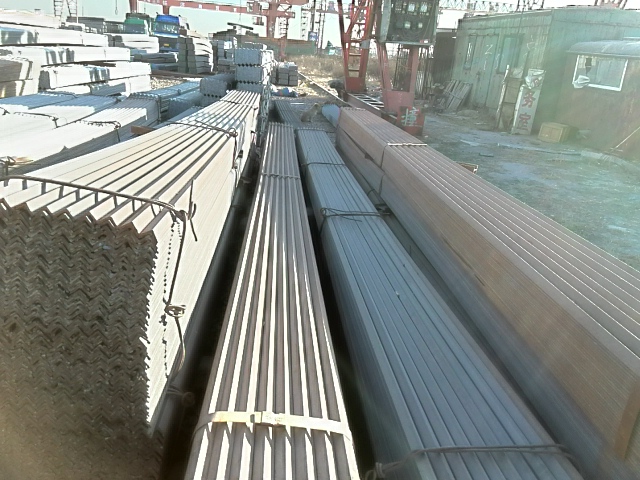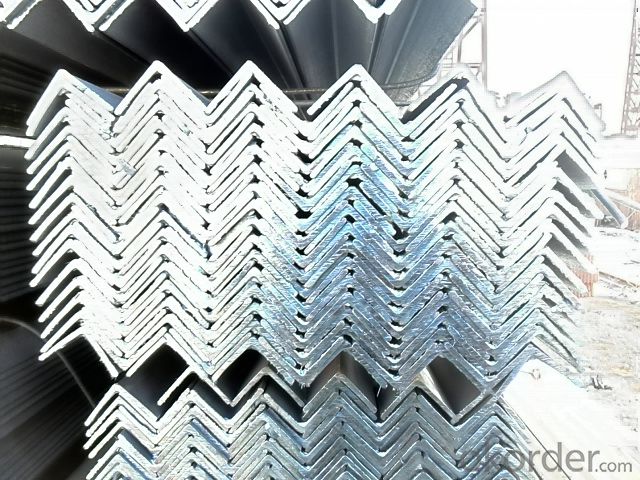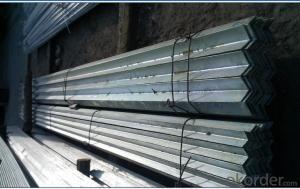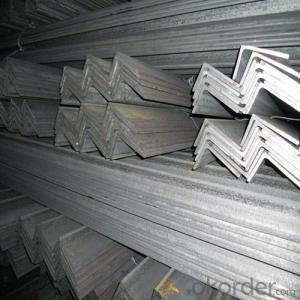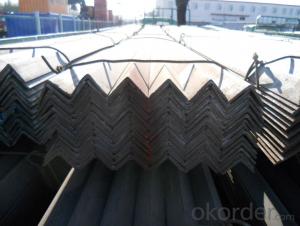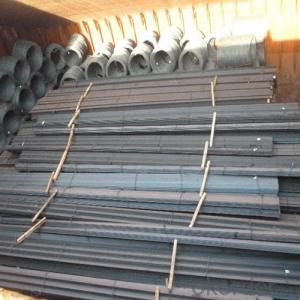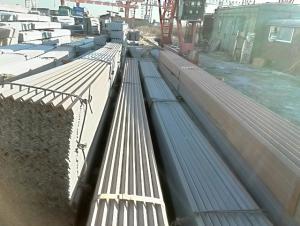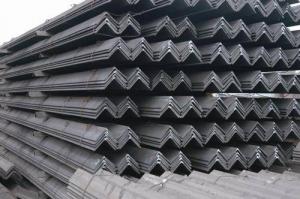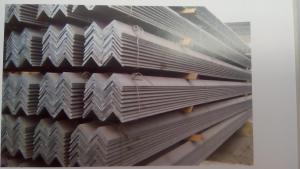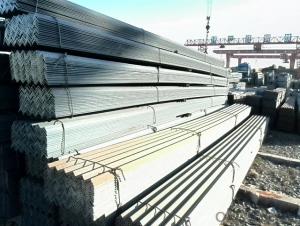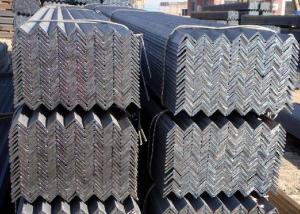Angle Steel Bars for Warehouse Buildings
- Loading Port:
- Tianjin
- Payment Terms:
- TT or LC
- Min Order Qty:
- 25 m.t.
- Supply Capability:
- 10000 m.t./month
OKorder Service Pledge
OKorder Financial Service
You Might Also Like
Product Description:
OKorder is offering high quality Hot Rolled Equal Angle Steel at great prices with worldwide shipping. Our supplier is a world-class manufacturer of steel, with our products utilized the world over. OKorder annually supplies products to European, North American and Asian markets. We provide quotations within 24 hours of receiving an inquiry and guarantee competitive prices.
Product Applications:
Hot Rolled Equal Angle Steels are ideal for structural applications and are widely used in the construction of buildings and bridges, and the manufacturing, petrochemical, and transportation industries.
Product Advantages:
OKorder's Hot Rolled Equal Angle Steels are durable, strong, and resist corrosion.
Main Product Features:
· Premium quality
· Prompt delivery & seaworthy packing (30 days after receiving deposit)
· Corrosion resistance
· Can be recycled and reused
· Mill test certification
· Professional Service
· Competitive pricing
Product Specifications:
Manufacture: Hot rolled
Grade: Q195 – 235
Certificates: ISO, SGS, BV, CIQ
Length: 6m – 12m, as per customer request
Packaging: Export packing, nude packing, bundled
EQUAL ANGLES SIZES |
| ||
a(mm) | a1(mm) | thickness(mm) | length |
25 | 25 | 2.5---3.0 | 6M/12M |
30 | 30 | 2.5---4.0 | 6M/12M |
38 | 38 | 2.5 | 6M/12M |
38 | 38 | 3.0---5.0 | 6M/12M |
40 | 40 | 3.0---6.0 | 6M/12M |
50 | 50 | 3 | 6M/12M |
50 | 50 | 3.7---6.0 | 6M/9M/12M |
60 | 60 | 5.0---6.0 | 6M/9M/12M |
63 | 63 | 6.0---8.0 | 6M/9M/12M |
65 | 65 | 5.0---8.0 | 6M/9M/12M |
70 | 70 | 6.0---7.0 | 6M/9M/12M |
75 | 75 | 5.0---10.0 | 6M/9M/12M |
80 | 80 | 6.0---10.0 | 6M/9M/12M |
90 | 90 | 6.0---10.0 | 6M/9M/12M |
100 | 100 | 6.0---12.0 | 6M/9M/12M |
120 | 120 | 8.0-12.0 | 6M/9M/12M |
125 | 125 | 8.0---12.0 | 6M/9M/12M |
130 | 130 | 9.0-12.0 | 6M/9M/12M |
140 | 140 | 10.0-16.0 | 6M/9M/12M |
150 | 150 | 10---15 | 6M/9M/12M |
160 | 160 | 10---16 | 6M/9M/12M |
180 | 180 | 12---18 | 6M/9M/12M |
200 | 200 | 14---20 | 6M/9M/12M |
FAQ:
Q1: Why buy Materials & Equipment from OKorder.com?
A1: All products offered byOKorder.com are carefully selected from China's most reliable manufacturing enterprises. Through its ISO certifications, OKorder.com adheres to the highest standards and a commitment to supply chain safety and customer satisfaction.
Q3: How soon can we receive the product after purchase?
A3: Within three days of placing an order, we will begin production. The specific shipping date is dependent upon international and government factors, but is typically 7 to 10 workdays.
Q3: Can stainless steel rust?
A3: Stainless does not "rust" as you think of regular steel rusting with a red oxide on the surface that flakes off. If you see red rust it is probably due to some iron particles that have contaminated the surface of the stainless steel and it is these iron particles that are rusting. Look at the source of the rusting and see if you can remove it from the surface.
Images:
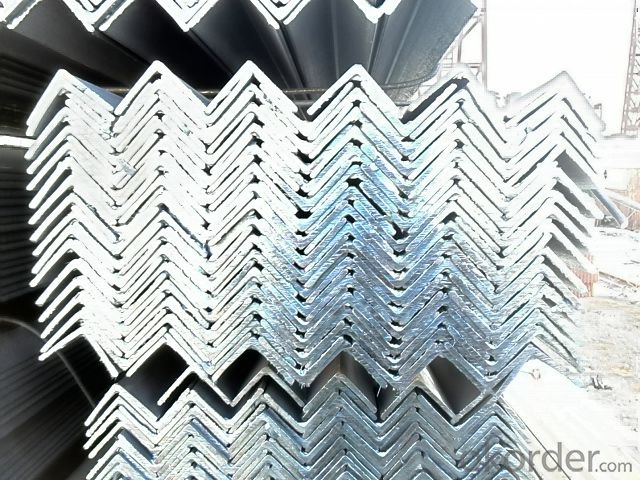
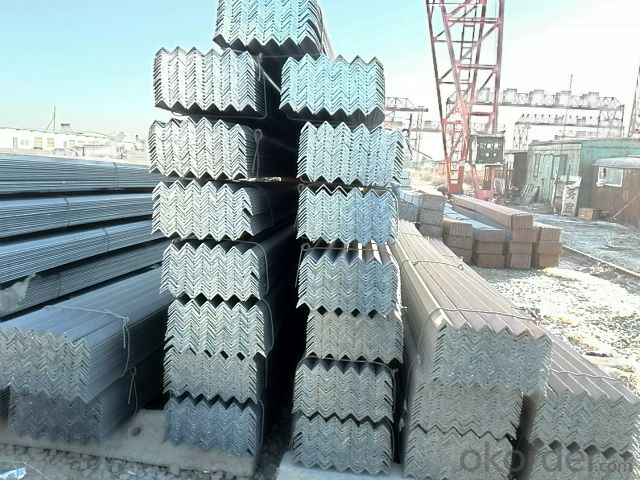
- Q: Can steel angles be used in marine applications?
- Yes, steel angles can be used in marine applications. They are commonly used in the construction of ships, offshore platforms, and marine structures due to their strength, durability, and corrosion resistance properties. Steel angles provide structural support and stability in marine environments, making them suitable for various applications in the maritime industry.
- Q: What are the common design codes and standards for steel angles?
- The most common design codes and standards for steel angles include the American Institute of Steel Construction (AISC) 360, the European Standard (EN) 10056, and the British Standard (BS) EN 10056. These codes and standards provide guidelines for the design, fabrication, and structural analysis of steel angles, ensuring the safety and reliability of structures that incorporate these structural elements.
- Q: What are the different specifications for steel angles?
- Steel angles, also referred to as angle irons or L-shaped bars, are utilized as versatile structural components in various industries. Their distinguishing feature is their L-shaped cross-section, which consists of two legs of either equal or unequal lengths. The dimensions of steel angles are determined by their leg lengths (L1 and L2) and thickness (T). The leg lengths can range from equal angles (L1 = L2) to unequal angles (L1 ≠ L2), with common leg lengths falling between 20mm and 200mm, and thicknesses typically ranging from 3mm to 20mm. In terms of material composition, steel angles are predominantly made from carbon steel, prized for its strength and durability. The choice of carbon steel grade employed is dependent on the specific application and the desired mechanical properties. Common grades include A36, A572, and A588. To ensure quality and consistency, steel angles are manufactured in adherence to various standards. These standards, such as ASTM (American Society for Testing and Materials), EN (European Norms), and JIS (Japanese Industrial Standards), establish guidelines for the chemical composition, mechanical properties, and tolerances of steel angles. Steel angles can possess different surface finishes to accommodate diverse applications and meet aesthetic requirements. Popular finishes include hot-dip galvanized, painted, or left as a mill finish (raw steel). Galvanized angles are coated with a layer of zinc for enhanced corrosion protection, while painted angles provide an additional layer of protection and can be customized in terms of color. To ensure conformity with required standards and suitability for structural applications, steel angles are subject to specific tolerances. These tolerances define acceptable deviations from the specified dimensions and can vary based on the manufacturing standard and the particular dimensions of the angle. In conclusion, the specifications for steel angles encompass dimensions (leg lengths and thickness), material composition (carbon steel grades), manufacturing standards (ASTM, EN, JIS), surface finish (galvanized, painted, mill finish), and tolerances. These specifications facilitate the selection of the appropriate steel angle for a given application, guaranteeing structural integrity and optimal performance.
- Q: Can steel angles be used for framing windows and doors?
- Absolutely! Framing windows and doors with steel angles is a fantastic option. In construction, these angles are widely favored due to their exceptional strength and durability. They establish a robust structure, guaranteeing ample support and stability for windows and doors. Moreover, steel angles possess remarkable resistance against warping, shrinking, and rotting, making them the perfect choice for any framing requirement.
- Q: Can steel angles be used in conveyor systems or material handling equipment?
- Yes, steel angles can be used in conveyor systems or material handling equipment. They provide structural support and stability, making them suitable for constructing frames and supports in conveyor systems and material handling equipment.
- Q: Can steel angles be used in seismic zones?
- Yes, steel angles can be used in seismic zones. Steel angles are commonly used in seismic design and construction as they provide structural support and stability. However, it is important to ensure that the steel angles are designed and installed according to the specific building codes and regulations for seismic zones to ensure their effectiveness and safety.
- Q: Can steel angles be used in sports or recreational facilities?
- Yes, steel angles can be used in sports or recreational facilities. Steel angles are commonly used in the construction of various structures, including sports facilities such as stadiums, gymnasiums, and indoor arenas. They provide strength, durability, and support for the construction of grandstands, bleachers, and other seating arrangements. Additionally, steel angles can be utilized in the fabrication of equipment and fixtures like goal posts, basketball hoops, and fencing, further demonstrating their versatility in sports and recreational settings.
- Q: Can steel angles be used for fencing and gate construction?
- Yes, steel angles can be used for fencing and gate construction. Steel angles provide structural support and stability, making them suitable for building sturdy fences and gates. They can be used to create frames, braces, and posts, ensuring durability and security.
- Q: Are steel angles resistant to high winds?
- Yes, steel angles are resistant to high winds. Steel is known for its strength and durability, making it an ideal material for structures that need to withstand strong winds. Steel angles, in particular, provide additional stability and support to buildings, as they are designed to distribute the load and resist bending forces. This makes them highly resistant to the powerful forces exerted by high winds. Additionally, steel angles are commonly used in the construction of buildings and infrastructure in areas prone to hurricanes, tornadoes, or other severe weather conditions, further proving their ability to withstand high winds. Overall, steel angles are a reliable and effective solution for ensuring structural integrity and wind resistance in various applications.
- Q: Can steel angles be used in the construction of storage tanks?
- Yes, steel angles can be used in the construction of storage tanks. Steel angles are commonly used in the construction industry due to their strength, durability, and versatility. In the case of storage tanks, steel angles can be used as structural components to provide support and stability to the tank's framework. They are often used to create the framework for the tank's walls, roof, and base, ensuring the tank's overall strength and stability. Additionally, steel angles can also be used to reinforce corners and joints, improving the tank's structural integrity. Overall, steel angles are a reliable and cost-effective option for incorporating into the construction of storage tanks.
Send your message to us
Angle Steel Bars for Warehouse Buildings
- Loading Port:
- Tianjin
- Payment Terms:
- TT or LC
- Min Order Qty:
- 25 m.t.
- Supply Capability:
- 10000 m.t./month
OKorder Service Pledge
OKorder Financial Service
Similar products
Hot products
Hot Searches
Related keywords
